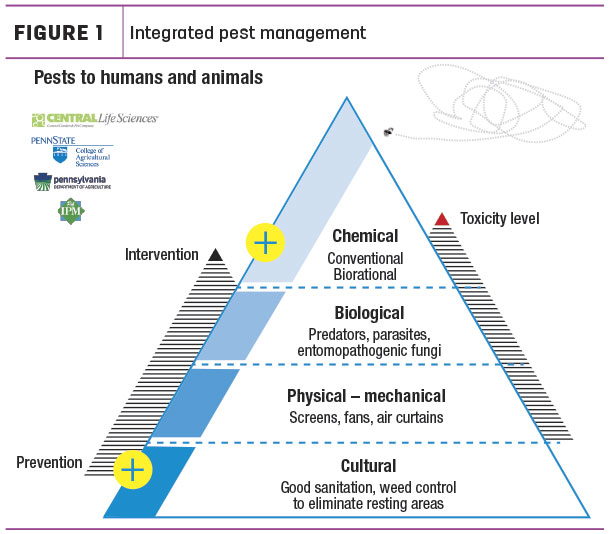The Only Guide to Pestwise
Table of ContentsPestwise Can Be Fun For EveryoneIndicators on Pestwise You Should KnowTop Guidelines Of PestwiseFascination About PestwisePestwise - QuestionsSome Known Questions About Pestwise.Pestwise Fundamentals Explained

Q. Define "integrated parasite administration" (IPM) and list numerous feasible control methods that may be made use of in an IPM method. A. Integrated pest monitoring is the incorporating of suitable parasite control techniques right into a single strategy to decrease parasites and their damage to an appropriate level. Bug control strategies might include: host resistance, organic control, social control, mechanical control, cleanliness, and chemical (chemical) control.
The Greatest Guide To Pestwise
What can you do to keep the pests you are attempting to regulate from becoming immune to the pesticides you utilize? A. Bug resistance can be lowered by utilizing integrated pest administration and revolving the sorts of pesticides used.
Insects are an important hazard to the farming business, and integrated bug management helps growers address and alleviate these risks. Integrated bug monitoring makes use of numerous approaches in complicated, therefore being an extra reliable remedy to the concern. Termite Control. In particular, getting rid of aggressive chemical methods allows for decreasing harm to people and the environment by using natural and more secure alternatives rather
Pestwise Things To Know Before You Get This
The objective of integrated bug management is to lessen this injury and control appropriate invasion levels instead of remove all undesired populaces. This is why it is essential to understand what procedures are justified in each instance and use aggressive ones only when various other integrated administration techniques don't work. Integrated monitoring alleviates the negative effects of a non-IPM approach, and the major benefits of IPM Conveniences of IPM.
An appropriate understanding of the problem range determines if the issue should be attended to. are the following elements of an IPM program since it is important to recognize if the microorganisms make potential dangers and pick the incorporated management alternatives or the specific pesticide usage. mean to reduce invasions by using different agronomic techniques.
Pestwise Fundamentals Explained
if avoidance was ineffective. Integrated management options in an IPM program start with much safer to extra hostile ones. As an example, target or program chemical splashing might adhere to hand-operated elimination or capturing that hasn't assisted. The prior incorporated monitoring facets aid understand how to plan and execute an IPM program step by action: Display your plants frequently.

Among others, IPM social methods include the adhering to field administration strategies: soil treatment; option of ideal plants; crop turning; interplanting or strip chopping; choice of planting days; weed control; use of catch plants. Beneficial dirt problems speed up plant development, and vigorous plants are more resistant to invasions. Healthy and balanced seedlings and seeds predetermine successful plant growth, so it is important to select pest-free growing product with strong roots.
, which is additionally used in the incorporated pest management system. Conversely, infestations enhance when plants of the exact same crop type or family grow together.
Potato beetles can harm expanding potatoes, along with tomatoes. Growing catch plants in spots is an additional choice for IPM intercropping. This integrated insect administration technique suggests attracting pests to specific plants and after that regulating them with chemical or mechanical strategies. Particularly, you can expand soybeans as trap crops for Japanese beetles.
Pestwise Fundamentals Explained
Barriers are case in points of physical IPM techniques. Let's take a more detailed check out them. Removing or selecting pests out by hand is a time and labor-consuming option that is commonly used in integrated monitoring and organic farming. Fully grown pests or their eggs and larvae are gathered by hand and damaged.

Department of Plant Sciences. University of Missouri. Soil solarization is an efficient incorporated administration strategy to disinfect the field by heating it in an all-natural means. This integrated administration technique indicates a typical means of ruining insects by killers, parasitoids, pathogens, and various other organic control agents (aka antagonistic organisms). The function of organic control in IPM is to.
The 8-Second Trick For Pestwise
With time, their population turned out to be an actual nuisance to farmers along with aboriginal kangaroos or dingoes. The walking cane toad is an additional instance showing integrated organic control failing hereof when it declined to search the target types and became a pest itself. Parasitoids create on or within their hosts to ultimately kill them after maturing.